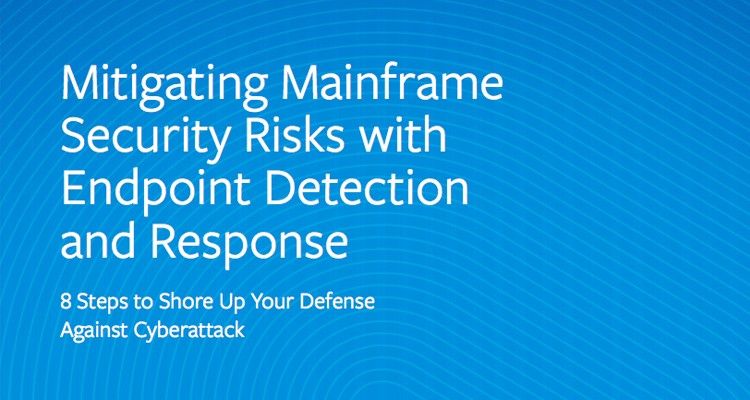When the mainframe was introduced some 50 years ago, it revolutionized the world, ushering in the rise of new technologies and industries alike. While IBM developers may not have dreamed the platform would enjoy such a lengthy product lifecycle (remember Y2K?), the fact is that mainframes continue to power some of our largest and most critical private and public sector organizations today—even as migration to the cloud continues to accelerate.
In fact, for many large organizations the mainframe is the cornerstone of their Autonomous Digital Enterprise (ADE), allowing them to differentiate their goods and services in the marketplace by bringing both extensive computing power and intelligent technologies to the task. When mainframe systems are optimized, organizations can achieve the agility, customer centricity and actionable insights today’s digital-first businesses and consumers demand.
Consider, for example, that some of the world’s largest hotel chains deploy reservation systems that are web-based for the consumer—and driven by mainframe technology on the back end.
Financial institutions everywhere are adding new capabilities in areas like fraud detection as well with the mainframe at their core. And major logistics companies both design their delivery routes and make them accessible to drivers in real time using AI and mainframe systems.
According to Forrester, 57 percent of enterprises with a mainframe “currently run more than half of their business-critical applications on the platform. Seventy-two percent of customer-facing applications are completely or very dependent on mainframe processing.”
Mainframe technology is clearly delivering all the availability, reliability, performance, scalability, and security required to run today’s applications and to make the platform an invaluable IT component for organizations in the future.
It’s time to move it out of the shadows of data processing and transaction management—and into the foreground of business innovation.
The Modern Mainframe
Mainframe technology continues to advance, and companies are increasingly recognizing the value of these time-tested systems. 2020 BMC research reveals that a full 90 percent of respondents believe in the “combined long-term and new workload strength of the platform, the highest level of confidence seen in six years.” And MIPS continue to increase.
Unlike mainframes of the past, IBM’s z15—its current model introduced in 2019—looks like any other on-premise server in your environment. Modern software tools are available for the mainframe as well, and they work just like the tools you may be using to manage applications in the Amazon cloud.
For example, you can leverage AI and automation to manage and optimize mainframe systems, making them operate more effectively with less effort and at a lower cost. Where the mainframe really shines, though, is in its ability to be secured using the industry’s most advanced intelligent technologies.
CISOs and enterprise security analysts believe every system should be secured and visible to the Security Operations Center however they can lack awareness of the vulnerabilities of their mainframe systems. Mainframe operations teams often believe in the native security of the mainframe and can lack awareness of the vulnerabilities facing mainframes. In reality the average mainframe has more than 100 severe vulnerabilities and can be compromised in as little as 6 minutes. While the mainframe is securable, the skills to effectively secure it are in short supply.
Tools like BMC AMI for Security add an extra layer of protection by enabling enterprise security information and event management (SIEM) systems to also monitor mainframe environments in real time. For instance, BMC AMI lets you secure your mainframe like any other system, removes the need for specialized mainframe expertise, and lets you extend your existing security investments and expertise to protect a critical piece of your infrastructure that is vulnerable to insider threats, social-engineering attacks, credential theft, and 0-day vulnerabilities
Optimizing the Mainframe
According to Gartner, “Application modernization is not one ‘thing.’ If you’re faced with a legacy challenge, the best approach depends on the problem you’re trying to solve. Replacement isn’t the only option.”
To truly optimize your mainframe systems, they must be viewed as strategic assets—and worthy of an investment in time and technology. Monitoring and management solutions such as BMC’s Automated Mainframe Intelligence (AMI) suite can transform the mainframe from a back-office workhorse to an agile, cost-effective platform for launching new applications, features, and services.
In developing BMC AMI solutions, we tapped decades of expertise and innovation from across the industry and consulted with leading data scientists as well. The result is a suite of tools that leverages AI, machine learning, and predictive analytics to achieve a self-managing mainframe.
BMC AMI is an end-to-end solution that is easy to implement. With BMC AMI, multivariate analysis is applied simultaneously across multiple data sources to track anomalies. Predictive analytics are driven by pattern analysis algorithms that detect anomalies and analyze their impact. BMC AMI also employs intelligent automation to keep the environment running securely and optimally, and built-in domain expertise that automatically tracks KPIs.
In essence, BMC AMI is part doctor, part security professional, part librarian/data scientist, and part financial advisor. Working together, BMC AMI solutions ensure the health, performance, security, and availability of mainframe systems, applications, and data while also ensuring easy data access for those—and only those—who are authorized. BMC AMI also continuously monitors metrics to help you reach your business goals and objectives while uncovering the insights you need to maximize your investments going forward.
Cultivating a New Generation of Mainframe Experts
Even as new, advanced software solutions are modernizing the mainframe, many organizations are not yet leveraging them to their full potential, often because their ITOps personnel are inexperienced on the platform.
In truth, when the right technological investments are made, organizations will find that they do not need as many—or as skilled—mainframe operators to keep the environments running well. Consider also that COBOL is a relatively easy programming language to learn. And with BMC’s powerful and integrated DevOps tools in place, COBOL becomes just another language that your capable application developers can quickly master.
BMC also offers training and mentoring programs to help bring clients up to speed on modern mainframe technologies. We have seen many customers successfully run mainframe training programs as well by leveraging IBM’s Z Academic Initiative.
Ultimately, with the right skills, tools, and mindset, your mainframe systems can become more than full participants in your Autonomous Digital Enterprise (ADE). They can lead the way. And you may just find that it is easier – and more efficient – to develop new applications on the mainframe than on any of your other valued hardware assets.
Learn more around how to secure the modernized mainframe and download our eBook, Mitigating Mainframe Security Risks with Endpoint Detection and Response.
Mitigating Mainframe Security Risks with Endpoint Detection and Response
These postings are my own and do not necessarily represent BMC's position, strategies, or opinion.
See an error or have a suggestion? Please let us know by emailing blogs@bmc.com.







